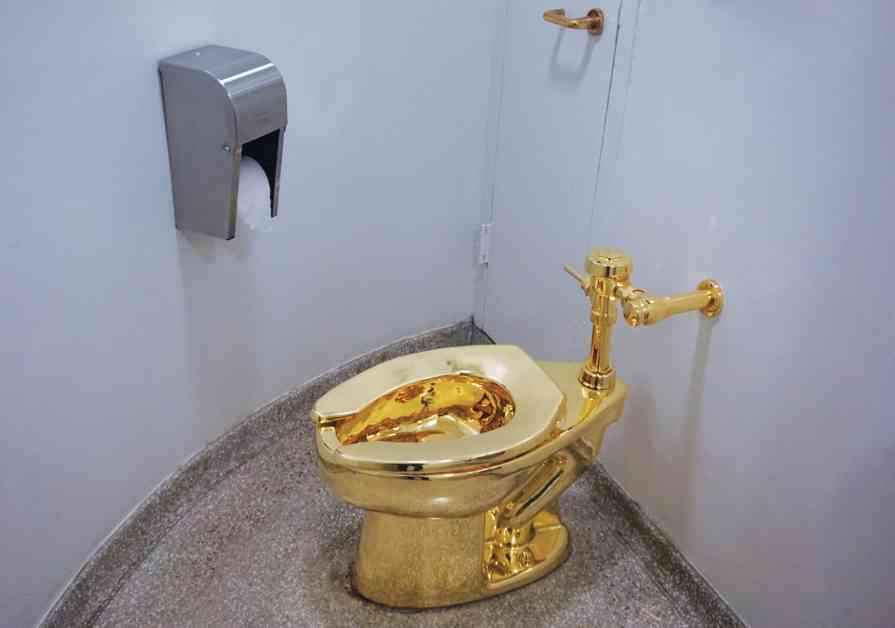Three daring individuals have recently faced charges for a high-profile heist involving a peculiar item – a golden toilet created by renowned artist Maurizio Cattelan. The audacious theft took place at Blenheim Palace, a historic estate in England, in 2019, leaving the art world stunned.
The stolen piece, aptly named “America” and valued at around $6 million, was a fully functional 18-carat gold toilet weighing a whopping 103 kilograms. The toilet was part of an exhibition showcasing Cattelan’s work at the prestigious 18th-century castle, which also happens to be the former home of Winston Churchill.
The Elaborate Heist
According to details presented in court by Prosecutor Julian Christopher KC, the burglary was meticulously planned and executed with precision. The group of thieves, comprising five individuals, drove through locked wooden gates on the palace grounds in stolen vehicles – an Isuzu truck and a VW Golf – just before 5 am. In a swift operation lasting a mere five minutes, they managed to dismantle and abscond with the golden toilet.
This brazen theft, as described by the prosecutor, required extensive groundwork and preparation. The sheer audacity of the raid left officials and art enthusiasts alike astounded by the criminals’ meticulous planning.
The Legal Proceedings
Among the accused, Michael Jones is currently undergoing trial at the Oxford Crown Court. Jones faces a charge of burglary, to which he has pleaded not guilty. On the other hand, Fred Doe and Bora Guccuk have been charged with conspiring to transfer criminal property, a charge they vehemently deny. Notably, James Sheen, a builder who employed Jones, has previously confessed to his involvement in the burglary.
Prior to the theft, Jones had purportedly visited Blenheim Palace on two occasions – once before the golden toilet was put on display and once after its installation. Despite ongoing investigations, the whereabouts of the stolen artwork remain unknown.
It is believed that the thieves disassembled the golden toilet into smaller components to facilitate its potential sale. Reports suggest that two of the accused individuals made contact with a jeweler in London’s Hatton Garden district, indicating a possible avenue for offloading the valuable stolen item.
The stolen toilet, originally installed in the guides’ bathrooms at the palace, was a unique attraction that allowed visitors to book time slots for its use. Prior to its stint at Blenheim Palace, the artwork had been on display at the Guggenheim Museum in New York starting from September 2016.
Renowned artist Maurizio Cattelan, the mastermind behind the golden toilet, expressed a positive outlook following the theft. In an interview with the New York Times, Cattelan viewed the robbery as a potentially Robin Hood-inspired act, emphasizing the piece’s underlying message of wealth disparity.
Crafted to resemble a standard Kohler toilet, the golden throne was meticulously created by a foundry in Florence, Italy, showcasing the artist’s penchant for blending art with everyday objects. Despite its opulence, the stolen toilet carried a deeper symbolic meaning, reflecting Cattelan’s social commentary on wealth distribution and accessibility to luxury.












